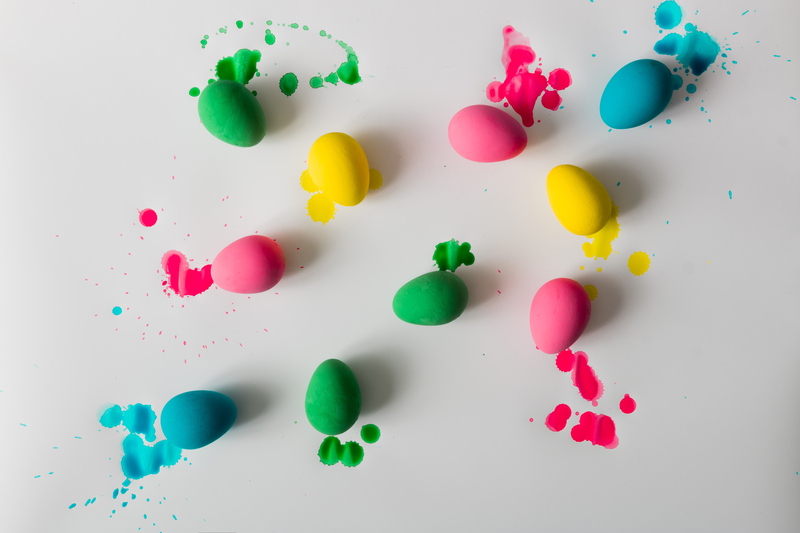Eco-Friendly Ways to Clean Burnt-On Residue from Your Stovetop
Posted on 01/09/2025
Eco-Friendly Ways to Clean Burnt-On Residue from Your Stovetop
Cooking can be a joyful activity, but the aftermath--especially burnt-on residue left on your stovetop--can be less than delightful. Many turn to harsh chemical cleaners to combat these stubborn stains, but there are eco-friendly ways to clean burnt-on residue from your stovetop that are just as effective, safer for your home, and better for the environment. In this comprehensive guide, we'll explore the best natural methods for cleaning burnt stovetop messes and introduce you to green cleaning techniques that keep your kitchen sparkling--without compromising your family's health or polluting the planet.

Why Choose Eco-Friendly Stovetop Cleaning Methods?
Before we dive into the solutions, it's important to understand why switching to eco-friendly cleaning is crucial:
- Protects indoor air quality: Commercial cleaning solutions often contain volatile organic compounds (VOCs) that can decrease air quality and cause respiratory issues.
- Non-toxic for children and pets: Natural ingredients like vinegar, baking soda, and lemon are safe--even if accidentally touched or swallowed.
- Less environmental impact: Eco cleaning products break down harmlessly in the environment, unlike synthetic chemicals that pollute waterways.
- Cost-effective: Many natural cleaning ingredients are inexpensive and already found in your pantry.
Cleaning your stove with green alternatives is a small step toward a safer, more sustainable home.
Understanding the Challenge: What Is Burnt-On Residue?
Burnt-on residue, also known as carbonized food deposits, forms when food spills over during cooking and is exposed to high heat. As the food bakes onto the surface, it becomes hard, sticky, and difficult to remove, requiring extra effort to clean. Stovetops, whether glass, ceramic, or gas, often come with their own set of cleaning requirements.
Preparation: The First Steps to Clean Burnt-On Stovetop Messes
Before using any eco-friendly burnt-on stove cleaning method, it's important to start with a few prep steps:
- Allow your stovetop to cool completely before cleaning to avoid burns.
- Remove loose debris and wipe surface with a damp cloth.
- Check your stovetop manufacturer's guidelines to ensure the method is safe for your appliance type.
Once prepared, you can safely use the following green stovetop cleaning techniques.
Best Eco-Friendly Ways to Clean Burnt-On Residue from Your Stovetop
1. Baking Soda and Vinegar: A Power Duo
Baking soda (sodium bicarbonate) is a gentle abrasive that lifts burnt-on residue without scratching surfaces. White vinegar is a natural acid that helps dissolve stubborn stains and degrease the stovetop.
- Step 1: Generously sprinkle baking soda over the affected areas.
- Step 2: Carefully pour white vinegar over the baking soda. The mixture will fizz, helping to break down grime.
- Step 3: Let the solution sit for 10-15 minutes. If the residue is thick, cover the area with a damp cloth to keep it moist.
- Step 4: Use a non-scratch scrubber or a soft microfiber cloth to gently remove the loosened residue.
- Step 5: Wipe clean with warm water.
This method is highly effective for both glass and ceramic stovetops, as it won't leave scratches.
2. Lemon Juice for a Fresh Clean
- Step 1: Squeeze fresh lemon juice over the burnt areas.
- Step 2: Sprinkle a small amount of salt or baking soda over the lemon juice (both add abrasive cleaning power).
- Step 3: Let sit for 5-10 minutes.
- Step 4: Scrub gently and wipe away.
For a deeper clean, you can use half a lemon as a natural scrubber, dipping it in salt before rubbing it on the stains.
3. Steam Cleaning: Zero Chemicals, Maximum Results
Harness the power of steam--the ultimate eco-friendly cleaner. Steam loosens burnt-on messes without chemicals.
- Step 1: Heat a damp cloth in the microwave or pour boiling water onto the burnt area (be careful to avoid burns).
- Step 2: Cover the affected spots with the hot, damp cloth for several minutes.
- Step 3: Wipe away the loosened grime with a clean cloth.
Alternatively, a handheld steam cleaner can make this process even easier and more effective.
4. Natural Dish Soap and Hot Water Soak
A simple yet eco-friendly cleaning technique involves natural, biodegradable dish soap and hot water.
- Step 1: Add a few drops of plant-based dish soap to the burnt-on stains.
- Step 2: Pour hot (not boiling) water over the area to soak the residue.
- Step 3: Let sit for 15-20 minutes or more for tough spots.
- Step 4: Gently scrub away the softened debris with a cloth or brush.
For best results, look for dish soaps with ingredients you recognize and no synthetic fragrance.
5. Eco-Friendly Stovetop Scrapers
If you're faced with extremely stubborn burnt-on stains, a plastic stovetop scraper (available in kitchenware stores) can be used safely on glass and ceramic surfaces. Opt for scrapers made with recycled plastic for a more eco-conscious option.
- Step 1: Hold the scraper at a 45-degree angle and gently work underneath the residue.
- Step 2: Move slowly to avoid scratching the surface.
- Step 3: Wipe away debris.
Tip: Never use metal tools or knives, as they can permanently scratch and damage your stove.
6. Cornstarch Paste for Extra Cleaning Power
Cornstarch is a gentle, natural abrasive that can be used to create a homemade cleaning paste for burnt-on messes.
- Step 1: Mix cornstarch and water to create a thick paste.
- Step 2: Apply to the stained area and let sit for 20 minutes.
- Step 3: Wipe away with a microfiber cloth.
7. Essential Oils for Stovetop Cleaning
Some essential oils--notably tea tree oil and lemon oil--have natural anti-bacterial and degreasing properties.
- Step 1: Add a couple of drops of essential oil to your spray bottle of vinegar and water solution.
- Step 2: Spray on stains for added cleaning and a pleasant aroma.
Eco-Friendly Burnt Stovetop Cleaning for Different Surfaces
Glass and Ceramic Stovetops
Use only non-abrasive cloths and avoid metal scrapers. The baking soda and vinegar method works best for these types, and always wipe with a microfiber cloth for a streak-free finish.
Gas Stovetop Grates and Burners
Remove grates and burners, soak them in a mixture of hot water, baking soda, and natural dish soap, scrub with a brush, rinse well, and dry before reassembling.
Stainless Steel Stovetops
For stainless steel, avoid anything abrasive. Wipe with a diluted vinegar solution, rinse, and dry with a soft cloth. If residue remains, try a paste of baking soda and water--always rub in the direction of the grain.
Additional Tips for a Green, Spotless Stovetop
- Clean spills promptly: Fresh spills are much easier to clean than baked-on messes, so tackle them right after the stovetop cools down.
- Reusable cleaning cloths: Ditch disposable paper towels in favor of washable microfiber or cotton cloths.
- Preventative maintenance: Wipe down the stovetop after each use, and do a weekly deep clean with eco-friendly products.
- Avoid toxic fumes: Never mix store-bought cleaners with natural solutions--they may react and create harmful gases.
Benefits of Choosing Natural and Eco-Friendly Stovetop Cleaners
- Improved air quality: No harsh fumes or chemical residues lingering in the kitchen.
- Peace of mind: Safe for the whole family, pets included.
- Better for your appliance: Less wear and tear, no risk of corrosion from aggressive chemicals.
- Sustainable living: Every eco-conscious choice supports a healthier, greener planet.

What to Avoid When Cleaning Burnt Stovetops
- Harsh abrasives: Products like steel wool, scouring powders, or metal scrapers can damage your stovetop's finish.
- Chemical drain or oven cleaners: These release toxic fumes and can corrode your appliance.
- Excess water on electric stoves: Ensure surfaces are dry before use to prevent electrical hazards.
- Mixing chemicals: Do not mix bleach with ammonia, vinegar, or other cleaning solutions.
Conclusion: Eco-Friendly Stovetop Cleaning That Works
Cleaning burnt-on residue from your stove doesn't have to be a toxic, backbreaking chore. With the eco-friendly ways to clean burnt-on residue from your stovetop discussed above, you can eliminate stubborn stains efficiently while maintaining a healthy, sustainable home. By using methods like baking soda and vinegar, lemon juice, steam cleaning, and other natural ingredients, you're protecting both your family and the environment.
Make the switch to green stovetop cleaning methods today--you'll discover that an eco-friendly lifestyle truly shines in the heart of your home.
Ready for More Eco Tips?
Explore other articles on embracing a green lifestyle, from eco-friendly kitchen cleaning to natural home care tricks that transform your living space. Clean safe. Clean green. Clean smart!




